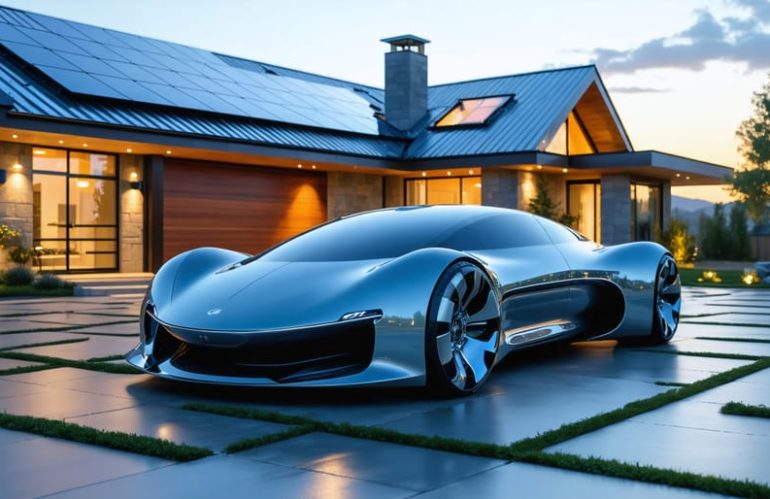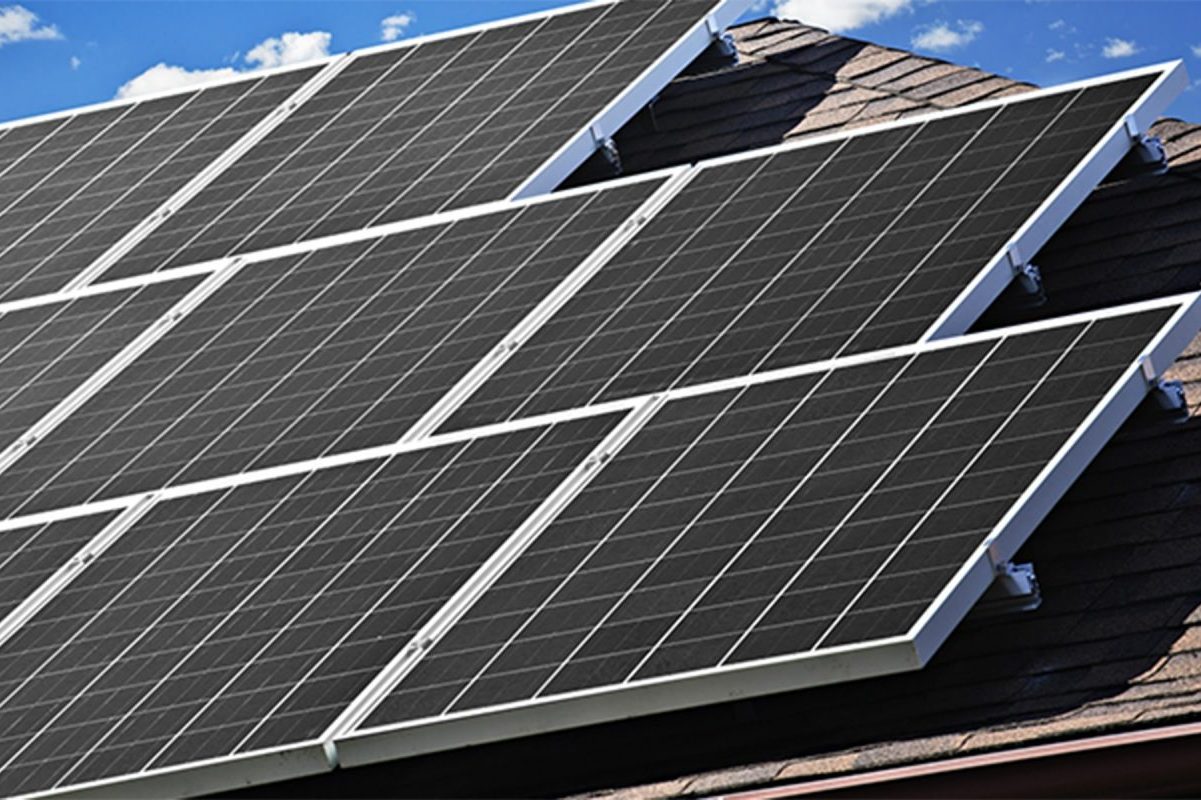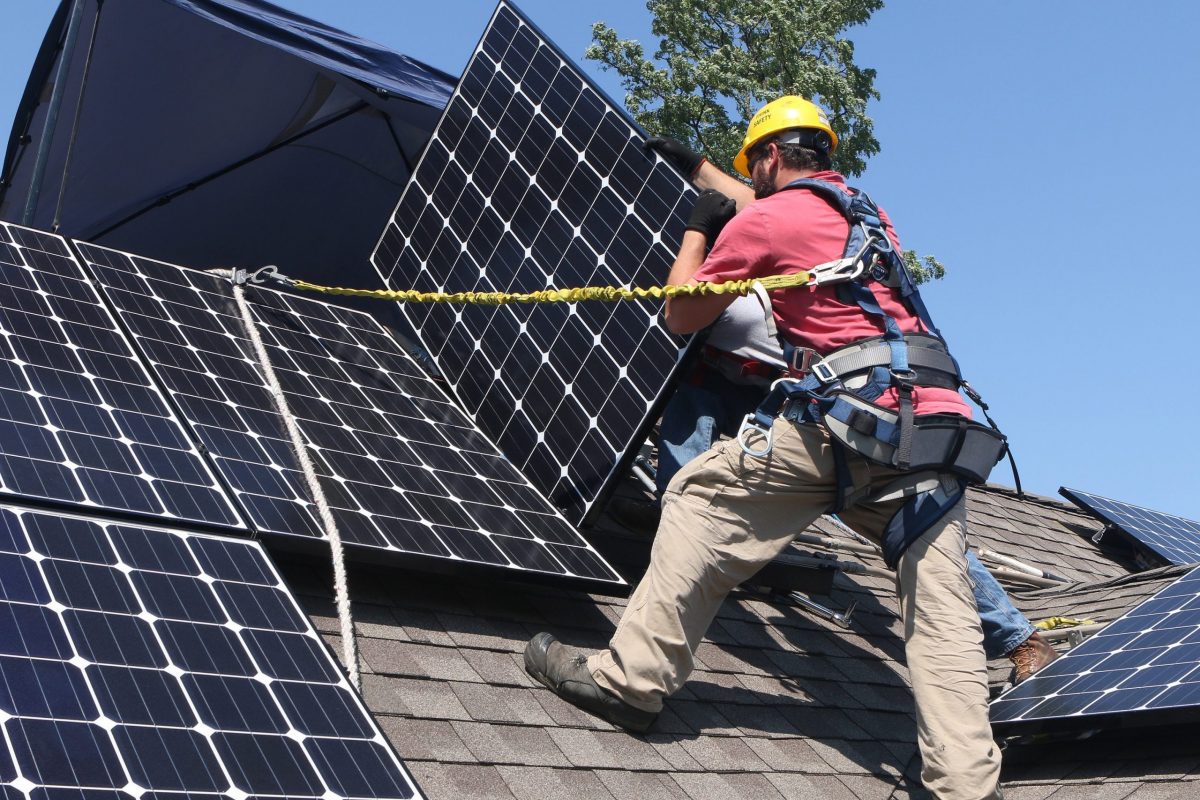Solar energy stands at the forefront of our clean energy revolution, with breakthrough technologies transforming how we power our homes and vehicles. Recent innovations have slashed solar panel costs by 70% over the past decade while boosting efficiency to record levels above 25%. These advancements aren’t just reshaping large-scale energy production – they’re making home solar systems more powerful, affordable, and practical than ever before.
The convergence of residential solar technology with electric vehicle charging has created an ecosystem where homeowners can now generate, store, and utilize clean energy for both their homes and transportation needs. Smart solar systems, equipped with AI-driven optimization and advanced battery storage, allow households to achieve energy independence while significantly reducing their carbon footprint and monthly utility bills.
This revolutionary shift in solar technology marks a turning point where sustainable energy isn’t just an environmental choice – it’s becoming the most economical and practical solution for powering our daily lives.
How Modern Solar Cars Actually Work
The Solar-to-Motion Process
Solar-powered vehicles transform sunlight into motion through an elegant three-step process. First, photovoltaic cells on the vehicle’s surface capture sunlight and convert it into electrical energy. These cells work just like the ones you might have on your home’s roof, but they’re specially designed to be lightweight and aerodynamic.
Next, this electrical energy is either used immediately or stored in the vehicle’s battery system for later use. Modern lithium-ion batteries can hold enough charge to keep the vehicle running even when the sun isn’t shining, similar to how home solar systems work with backup batteries.
Finally, electric motors convert this stored energy into mechanical power, turning the vehicle’s wheels. The entire process is remarkably efficient, with minimal energy loss compared to traditional fuel engines. What’s particularly exciting is that the same technology that powers these vehicles is becoming increasingly common in residential solar applications, making it possible to charge your electric vehicle directly from your home solar system, creating a complete solar-to-motion cycle.
Connecting Your Home Solar to Your EV
Connecting your home solar system to your electric vehicle creates a powerful synergy that maximizes your investment in clean energy. Modern EV charging systems can be seamlessly integrated with residential solar installations, allowing you to power your car directly from the sun. This setup not only reduces your carbon footprint but can significantly lower your transportation costs.
Most home solar systems can accommodate EV charging with minimal modifications. The key is installing a Level 2 charger, which provides faster charging speeds and better integration with your solar setup. Smart charging systems can be programmed to prioritize solar-generated electricity, ensuring your car charges primarily when your panels are producing power.
The financial benefits are compelling: by charging your EV with solar power, you can effectively eliminate fuel costs while extending the payback period of your solar investment. Many homeowners report saving thousands annually on combined energy and transportation expenses. Additionally, some utility companies offer special rates or incentives for solar-powered EV charging, making the combination even more attractive.
Remember to consult with a qualified solar installer to ensure your system is properly sized to handle both your home’s energy needs and EV charging requirements.
Game-Changing Breakthroughs in Solar Vehicle Tech
New Solar Cell Efficiency Records
Recent breakthroughs in solar cell technology have pushed efficiency ratings to new heights, particularly in vehicle applications. The most notable advancement comes from a team of researchers who achieved a remarkable 39.2% efficiency rate using multi-junction solar cells – nearly double the efficiency of traditional panels commonly used on homes today.
These new solar cells utilize a sophisticated layering technique that captures different wavelengths of light, maximizing energy generation even in less-than-ideal conditions. What’s particularly exciting is how this technology is being adapted for everyday use. Major automotive manufacturers are already incorporating these high-efficiency cells into their latest electric vehicles, with some models achieving up to 70 miles of range per day from solar power alone.
The implications for residential solar are promising. As this technology becomes more affordable and widespread, homeowners can expect to see similar high-efficiency panels becoming available for rooftop installation. Early estimates suggest that these advanced cells could reduce the number of panels needed on a typical home by up to 40%, while generating the same amount of power.
Industry experts predict that within the next five years, these improved efficiency rates will become the new standard, making solar power an even more attractive option for homeowners looking to maximize their energy independence while minimizing their environmental impact.
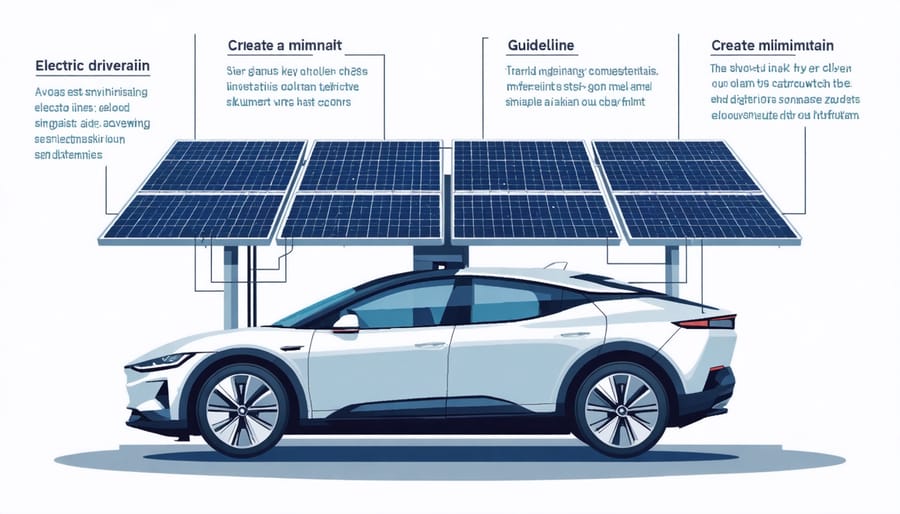
Better Energy Storage Solutions
Recent solar storage breakthroughs have revolutionized how we harness and utilize solar energy in vehicles. Modern lithium-ion batteries now offer significantly improved energy density, allowing solar vehicles to travel longer distances on a single charge while maintaining a lighter weight profile.
The latest battery technologies incorporate smart charging systems that optimize power storage based on usage patterns and weather conditions. These advanced systems can now store excess energy more efficiently during peak sunlight hours and distribute it more effectively when needed, addressing one of solar power’s biggest challenges: intermittency.
What’s particularly exciting for homeowners is how these automotive advances are crossing over into residential solar storage. The same high-capacity batteries developed for solar vehicles are being adapted for home use, offering more reliable backup power during outages and better overall energy management.
Solid-state batteries represent the next frontier in energy storage, promising even greater capacity and faster charging times. These batteries are safer, more durable, and have a longer lifespan than traditional lithium-ion options. While currently in development, they’re expected to dramatically improve both solar vehicle performance and home energy storage capabilities within the next few years.
For homeowners considering solar investment, these storage improvements mean more reliable power supply, reduced energy costs, and better return on investment.
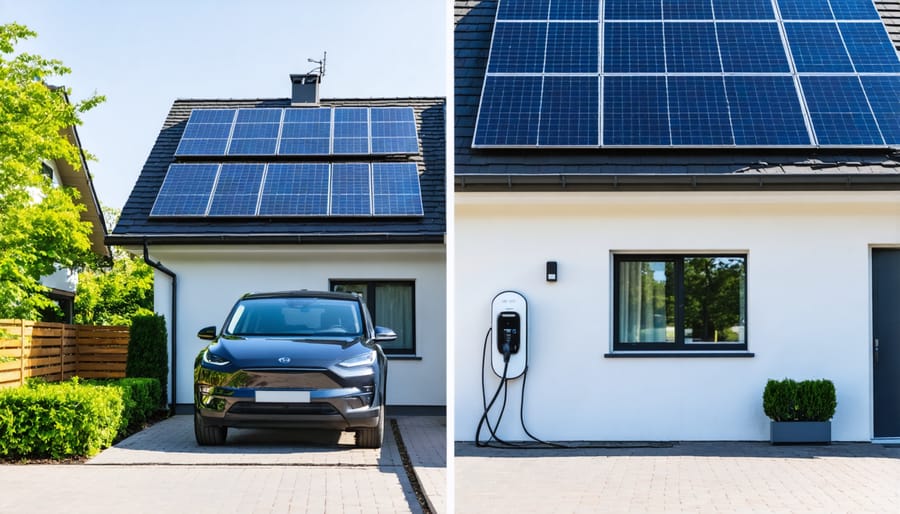
Real Benefits for Homeowners
Cost Savings Beyond Gas
The financial benefits of solar-powered transportation extend far beyond just saving money at the gas pump. When integrated with home solar systems, electric vehicles (EVs) become part of a comprehensive cost-effective solar solutions strategy that multiplies your savings. Homeowners who charge their EVs using solar power typically save $1,200 to $1,800 annually on fuel costs alone, but the advantages don’t stop there.
Maintenance costs for electric vehicles are significantly lower than traditional cars, with fewer moving parts and no oil changes required. Insurance companies often offer discounts for solar-powered homes and electric vehicles, recognizing their reduced environmental impact and lower risk profiles. Additionally, many states provide tax incentives and rebates for combining home solar systems with EV charging stations.
The integration of solar-powered transportation also helps protect against future energy price increases. As utility rates continue to rise, having a solar-powered home and vehicle provides valuable energy independence and predictable monthly costs. This investment becomes even more valuable when considering that modern solar systems can power both your home and vehicle for 25+ years, creating substantial long-term savings.
Environmental Impact
Solar vehicles represent a significant leap forward in sustainable transportation, offering remarkable environmental benefits that extend far beyond traditional vehicles. By harnessing the sun’s energy, these vehicles produce zero direct emissions during operation, dramatically reducing their carbon footprint compared to conventional gasoline-powered vehicles. A typical solar-powered car can prevent approximately 4-5 metric tons of CO2 emissions annually – equivalent to planting over 100 trees.
The environmental advantages don’t stop at emissions reduction. Solar vehicles help decrease our dependence on fossil fuels, contributing to cleaner air quality in urban areas and reducing the environmental impact of oil extraction and transportation. They also operate much more quietly than traditional vehicles, helping to reduce noise pollution in our communities.
The manufacturing process of solar vehicles is becoming increasingly sustainable, with many manufacturers using recycled materials and implementing eco-friendly production methods. The solar panels themselves have a long lifespan of 25-30 years and are largely recyclable, minimizing waste. Additionally, the integration of solar technology in vehicles supports the broader renewable energy ecosystem, encouraging innovation in sustainable transportation and energy storage solutions that benefit both the environment and future generations.
What’s Coming Next
The future of solar energy is looking brighter than ever, with several groundbreaking innovations set to transform how homeowners harness the sun’s power. Among the most exciting solar energy trends, perovskite solar cells are expected to hit the market within the next two years, promising higher efficiency at lower costs. These next-generation panels could boost energy conversion rates by up to 30%, making solar power even more attractive for homeowners.
Smart solar technology is also on the horizon, with AI-powered systems that automatically adjust energy collection and storage based on your household’s unique consumption patterns. This means more efficient energy use and potentially bigger savings on your utility bills. Additionally, integrated solar roofing materials are becoming more sophisticated, offering seamless alternatives to traditional panel installations while maintaining optimal energy production.
Battery storage technology is advancing rapidly, with new solutions promising longer life spans and increased capacity at reduced costs. This development will make it easier for homeowners to achieve energy independence and maintain power during grid outages. Solar panel recycling programs are also expanding, addressing end-of-life concerns and making solar energy an even more sustainable choice for environmentally conscious homeowners.
For those considering solar installation, these upcoming innovations suggest waiting might be tempting. However, current technology is already highly efficient, and most new developments will be compatible with existing systems through simple upgrades.
The rapid advancement of solar vehicle technology signals an exciting future for sustainable transportation and home energy solutions. As solar panels become more efficient and affordable, homeowners have unprecedented opportunities to participate in the clean energy revolution. By investing in residential solar systems today, you can reduce your carbon footprint while potentially saving thousands on energy bills. Consider starting with a home energy audit to determine your solar potential, then consult with certified installers to explore financing options. Whether you’re interested in powering your home, charging an electric vehicle, or both, the time is right to embrace solar technology. The convergence of vehicle and residential solar innovations makes it easier than ever to transition to a more sustainable lifestyle while enjoying long-term financial benefits.

